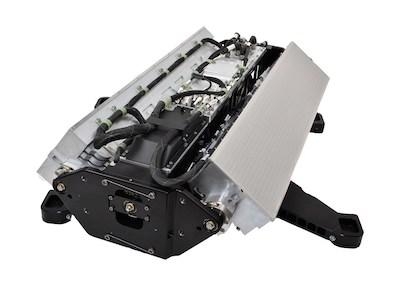Designed For Commercial Wide-body Aircraft
Viasat has introduced its second-generation Ku-/Ka-band shipset, inclusive of an advanced hybrid antenna and complementary radome. The latest dual-band system, aimed at the commercial wide-body aircraft market, will keep passengers and crew connected across commercial Ku- and Ka-band Geosynchronous and Non-Geosynchronous satellite networks, virtually anywhere they fly around the globe. The shipset sets into motion an accelerated migration path for commercial airlines to operate on Viasat's global network. It immediately enables worldwide roaming connectivity for new or retrofit aircraft – serving a large and growing portion of their routes on the fastest Ka-band networks, and the balance on global widebeam or spotbeam Ku satellites. Airlines can steadily migrate a greater proportion of their routes to the faster, more economical Ka-band service enabled by a growing array of partner satellites as well as the global ViaSat-3 constellation planned for launch in 2021 and 2022.

Viasat has years of expertise in delivering dual-band antenna systems to the global market. The Company's first-generation shipset served airframes ranging from commercial narrow-body planes to larger senior leader government aircraft.
"Hybrid antenna systems are not new to Viasat—we have nearly two decades of experience deploying and managing these systems," said Don Buchman, vice president and general manager, Commercial Aviation, Viasat. "Similar to the first generation, Viasat's latest dual-band system promotes smooth transitions among multiple satellite beams across Ku- and Ka-band networks. Our next-generation Ku-/Ka-band terminal is the most capable and flexible solution for commercial wide-body aircraft—giving them a global solution today—with piece of mind that the technology deployed will be forward-compatible with the innovations in spacecraft technology of tomorrow."
Key benefits for airlines are the delivery of a forward-compatible hybrid shipset solution that leverages today's Ku- and Ka-band networks, but enables airlines to easily transition to the faster, more reliable, more economical Ka-band networks of tomorrow. For passengers and crew, Viasat's hybrid technology allows for continuous connectivity when in-flight.
In-flight, customers will have access to all the Ka-band satellites currently participating in Viasat's global network (WildBue-1, Anik-F2, ViaSat-1, ViaSat-2 and KA-SAT, as well as nbn's SkyMuster I and II and other current and future partner satellites). When out of Ka-band coverage, service will switch to the Ku-band network. Viasat is continuing to add Ka-band capacity to its global network through partnerships and via its ViaSat-3 global Ka-band constellation, comprised of three ultra-high capacity satellites that are expected to offer complete visible Earth coverage. The first two ViaSat-3 class satellites are under construction to serve the Americas and the Europe, Middle East and Africa (EMEA) markets, respectively. These two satellites are expected to be launched by the 2021 timeframe. Viasat has also recently commenced a third ViaSat-3 class satellite for Asia Pacific (APAC), expected to be launched in the 2022 period—enabling full global Ka-band coverage.
(Image provided with ViaSat news release)
 NTSB Final Report: Aviat A1
NTSB Final Report: Aviat A1 ANN's Daily Aero-Linx (07.08.25)
ANN's Daily Aero-Linx (07.08.25) Classic Aero-TV: Fly Corvairs Reliable Engine Alternative
Classic Aero-TV: Fly Corvairs Reliable Engine Alternative ANN FAQ: Contributing To Aero-TV
ANN FAQ: Contributing To Aero-TV Classic Aero-TV: CiES Fuel-Quantity and e-Throttle Systems Praised
Classic Aero-TV: CiES Fuel-Quantity and e-Throttle Systems Praised



